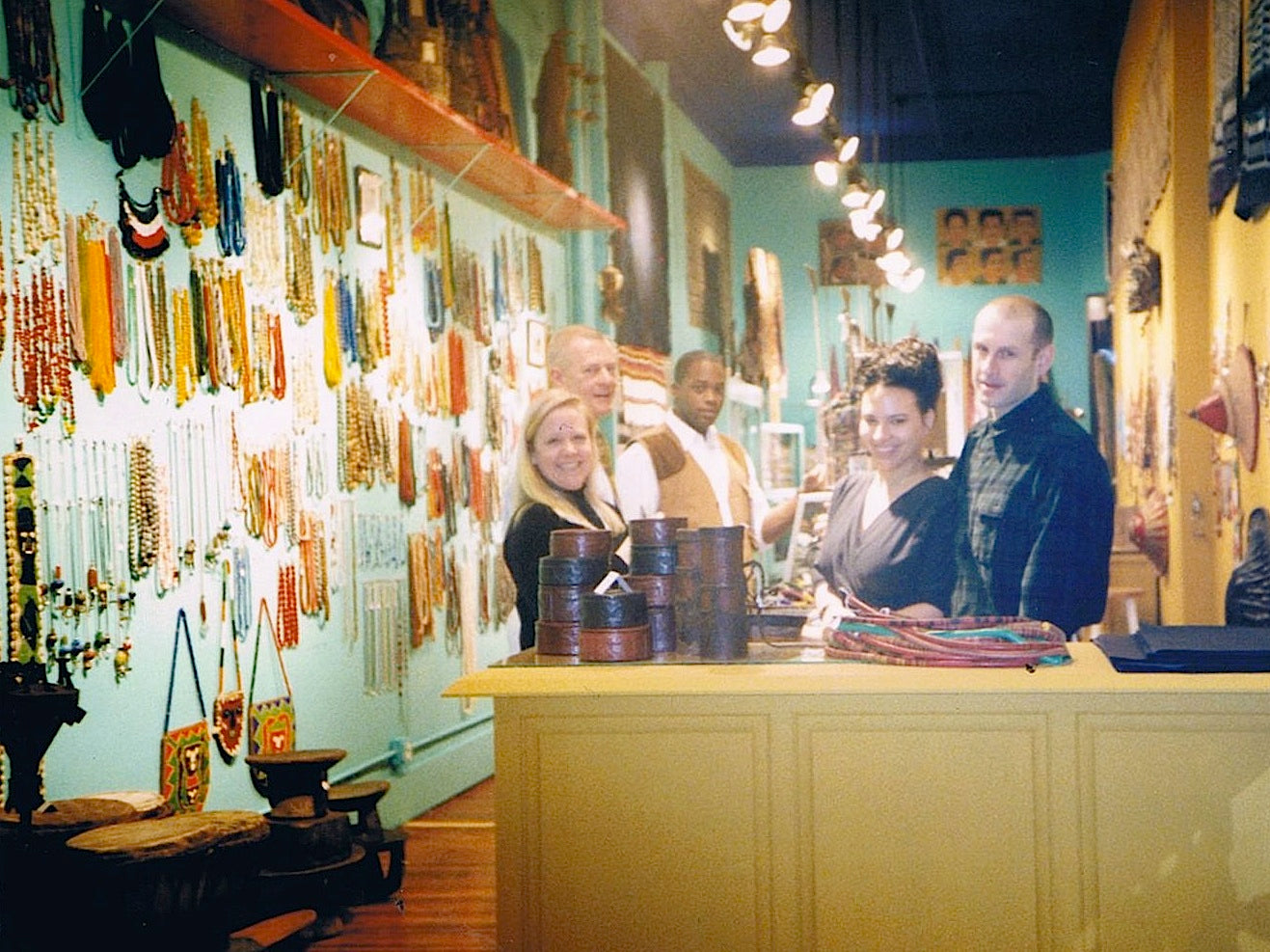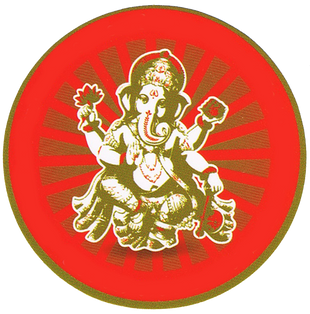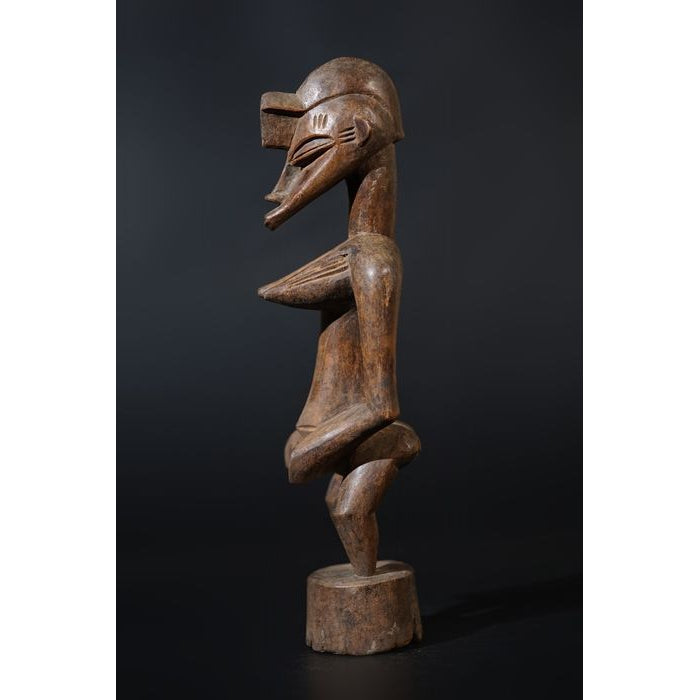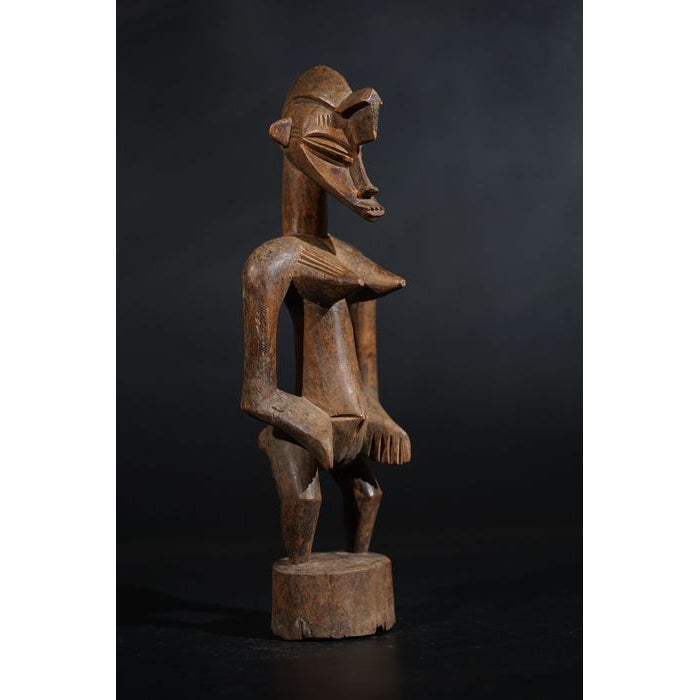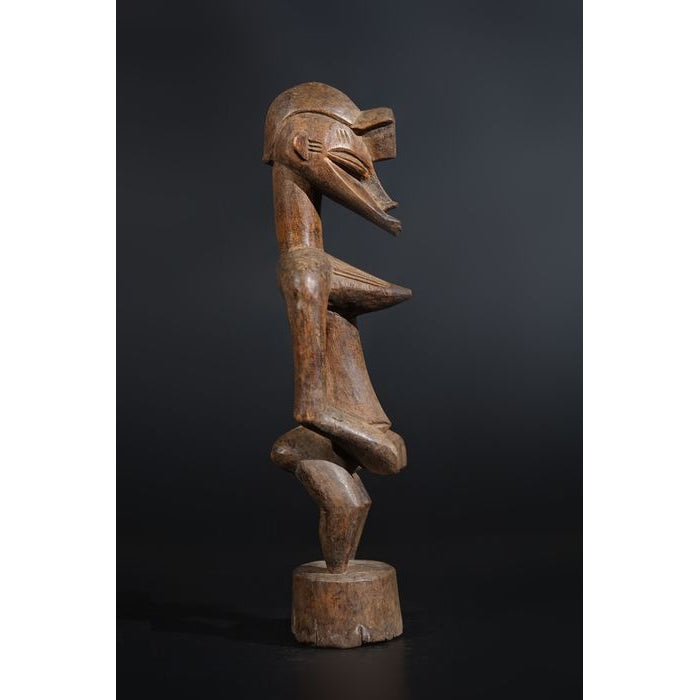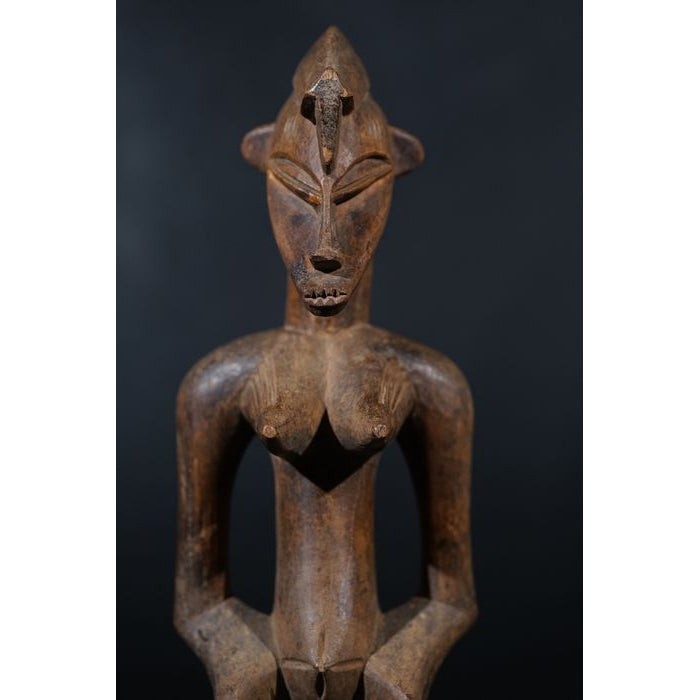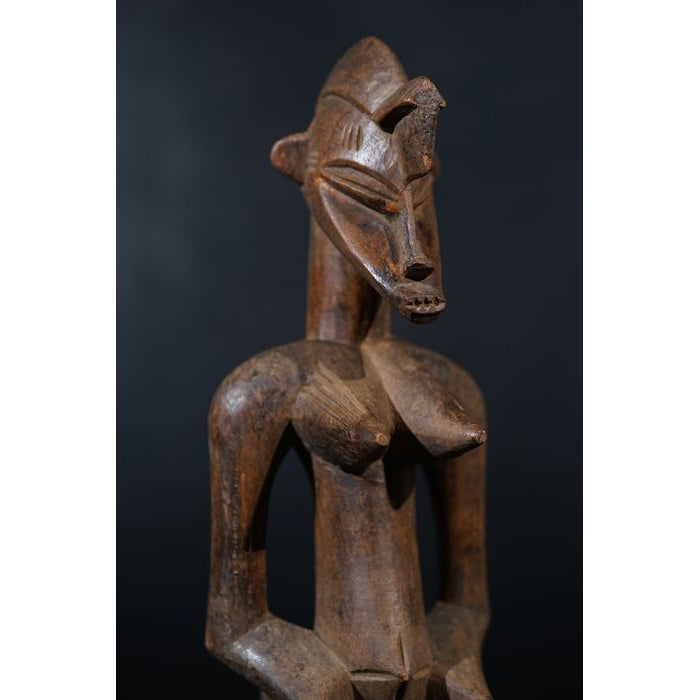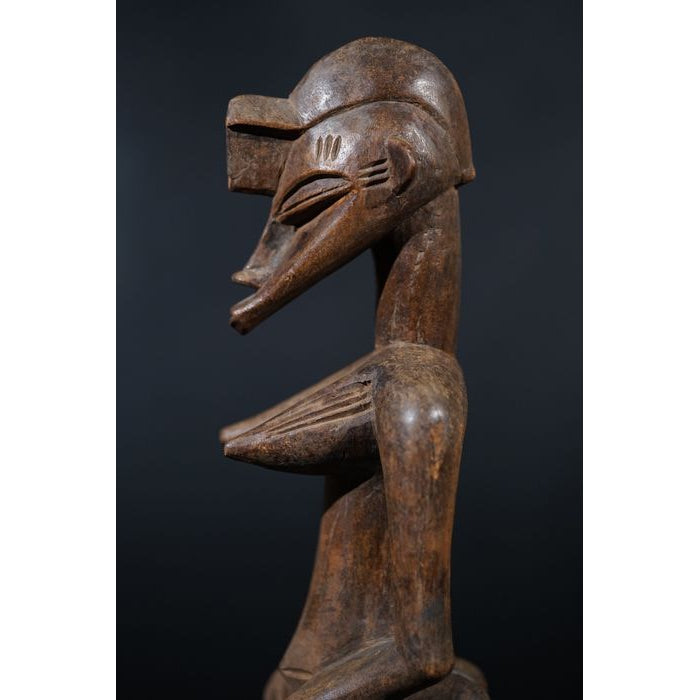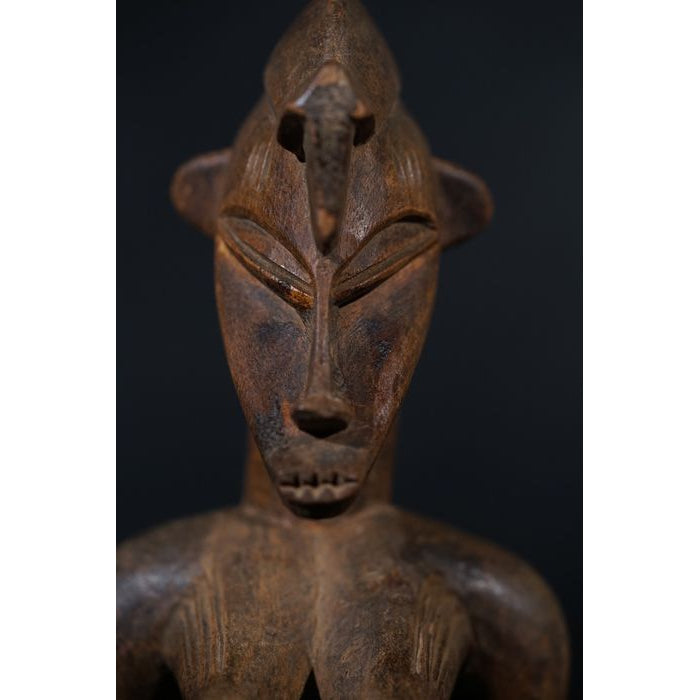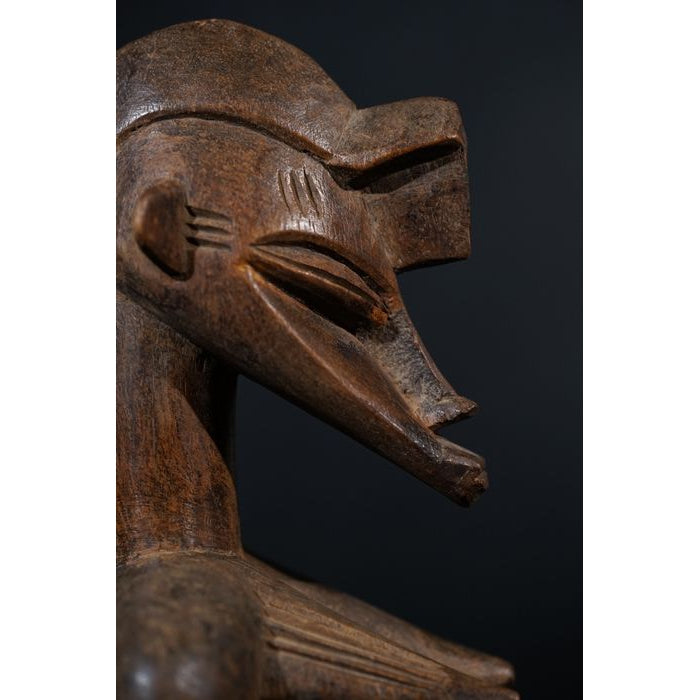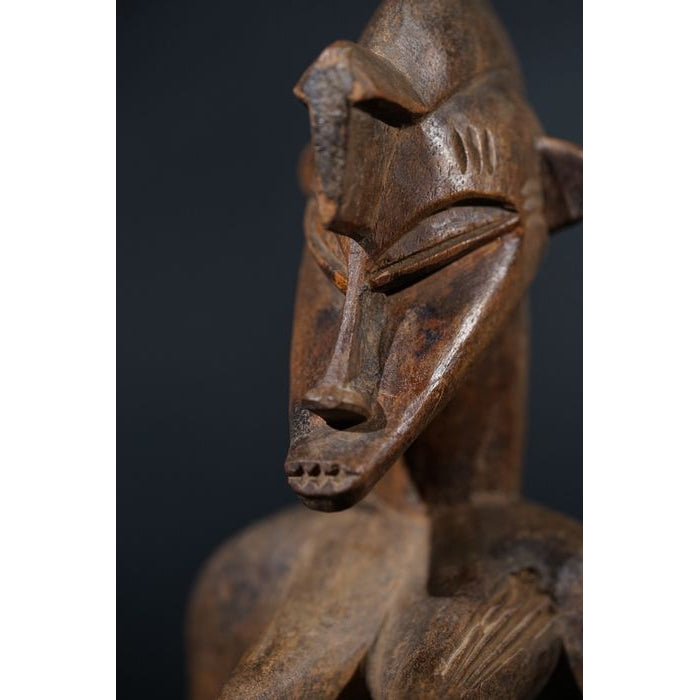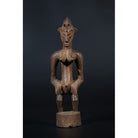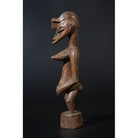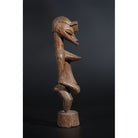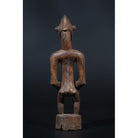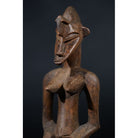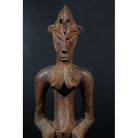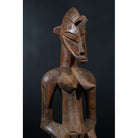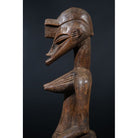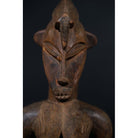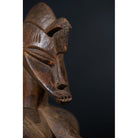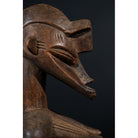Senufo Rhythm Pounder Guardian Sculpture, Ivory Coast #801
Pickup available at 16 East 17th Street
Usually ready in 24 hours
- Senufo Guardian sculpture, Ivory Coast
- This powerful, Senufo Guardian sculpture has an expressive shape. It comes from the region of Korhogo, Country Diamtènè.
- Reddish tomocre patina, traces of intensive ritual use.
- Measurements: 36cm
- Provenance Mohamed Belo Garba
The rhythm pounder (deble) from the Senufo people of the Ivory Coast was once a crucial prop in both
commemorative ancestral rites and in initiations of adolescents to adult society; it was also a benevolent symbol
of fertility and a conduit to the departed.
The few known male and female rhythm pounder pairs are thought to represent the primordial couple, referred to
as 'Pombibele', which means "those who gave birth.
Typically it is female figures are represented and it has been speculated that these single figures are one of a
pair, the location of the other being unknown. According to Anita Glaze (in Barbier, ed. 1993: 44), however, 'not
all funerary sculpture is commissioned as a pair, nor do all relatively large scale processional display figures
necessarily belong to the primordial couple category. A poro society may possess one or more single figures that
were initially commissioned as a result of a member's visionary encounter with spirits in dreams or while alone in
the fields.'
These pounders were traditionally used at funeral ceremonies for Poro society members. In some areas, they
are actually pounded, at others, they are gathered at the center of the ceremonial grounds.
Sources: Sotheby's, A History of Art in Africa
Rhythm pounders were used during funerary rites of the important Senufo poro secret society. Within the corpus of Senufo rhythm
pounders most of the known examples of exceptional style and refinement are generally considered to either originate in the northern
Senufo region, near Sikasso or the central region, near Korhogo, in the Ivory Coast.
A few male and female rhythm pounder pairs, thought to represent the primordial couple, are known (see Goldwater 1964 and
Gottschalk 2002 for other examples and discussion). Typically, though, female figures are represented and it has been speculated
that these single figures are one of a pair, the location of the other being unknown. According to Glaze (in Barbier, ed. 1993: 44),
however, 'not all funerary sculpture is commissioned as a pair, nor do all relatively large scale processional display figures necessarily
belong to the primordial couple category. A poro society may possess one or more single figures that were initially commissioned as a
result of a member's visionary encounter with spirits in dreams or while alone in the fields.'
Pickup available at 16 East 17th Street
Usually ready in 24 hours
Pickup available, usually ready in 24 hours
16 East 17th Street
Ground Floor
New York NY 10003
United States
We truly love that you're making things, but unfortunately we do not buy things consignment or purchase outside work.
We have a reliable network of suppliers and are not currently in the position to purchase your collections. But we're thrilled that you thought of us.
Unfortunately no, we cannot create custom designs or sizes for our customers. However, you may be able to shorten them / decrease the width of the designs we offer slightly by manipulating the wires that connect the beads together.
A: It depends on a variety of factors. Get in touch with us to let us know what you're interested in learning, and we'll let you know if it's a possibility.
A: We do indeed sell at wholesale prices to those who meet our requirements. We have a general policy and a Wholesale Plus+ program for larger companies than would truly like to purchase in bulk. To learn about our wholesale policies, please see here.
A: Beads of Paradise does not, at anytime, give loans (pulls), secured or unsecured. We do however do rentals for stylists. Please see here for more info.
A: We love working with you when possible. Please send us a picture and or a description of what you're interested in and we'll be in touch.
It is our policy that NO Labor is done “on the spot”/”while you wait”. Any exceptions to this are at the discretion of the management and only at the discretion of the management. All items at Beads of Paradise are sold “As Is” with no warranty implied or expressed. If you have a problem with one of your purchases, please ask to see a manager. Thank you for your understanding.
For most pieces of jewelry on our site, we should be able to accommodate a request such as this, with some exceptions. You can purchase and leave a note when you purchase, or get in touch with us to inquire (please include a link to the product in question).
Beads Of Paradise began in the late 1980’s as a small store in the East Village. We originally specialized in African antiquities, textiles, beads and jewelry – but as interest in world art and beads grew throughout the 1990s, we underwent a major expansion and moved to our current location in the historic Flatiron district of New York City. Read More; A Visual History
